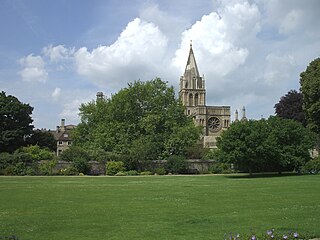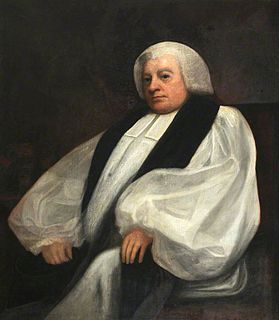
Roger Northburgh was a cleric, administrator and politician who was Bishop of Coventry and Lichfield from 1321 until his death. His was a stormy career as he was inevitably involved in many of the conflicts of his time: military, dynastic and ecclesiastical.

The Bishop of London is the ordinary of the Church of England Diocese of London in the Province of Canterbury.

The Diocese of Westminster was a short-lived diocese of the Church of England, extant from 1540–1550. Westminster Abbey served as its cathedral.

The Bishop of Worcester is the head of the Church of England Diocese of Worcester in the Province of Canterbury, England.
William Guise (c.1653–1683), was an English orientalist.

Samuel Fell D.D. was an English academic and clergyman, Dean of Christ Church, Oxford and Vice-Chancellor of the University of Oxford during the First English Civil War.

The Dean of Christ Church is the dean of Christ Church Cathedral, Oxford and head of the governing body of Christ Church, a constituent college of the University of Oxford. The cathedral is the mother church of the Church of England Diocese of Oxford and seat of the Bishop of Oxford. The chapter of canons of the cathedral has formed the governing body of the college since its foundation, with the dean as ex officio head of the chapter and ipso facto head of the college. Since 4 October 2014, the dean has been Martyn Percy.

Edward Smallwell (c.1720–1799) was an English bishop of St David's and bishop of Oxford.
Robert de Stretton was Bishop of Coventry and Lichfield following the death of Roger Northburgh in 1358. A client of Edward, the Black Prince, he became a "notorious figure" because it was alleged that he was illiterate, although this is now largely discounted as unlikely, as he was a relatively efficient administrator.
Richard Marshall D.D. was an English clergyman and academic administrator at the University of Oxford.

Robert Booth (1662–1730), an aristocratic 18th-century Anglican priest, served as Archdeacon of Durham from 1691 and also as Dean of Bristol from 1708.
Samuel Creswicke was an 18th Century Anglican priest.

Very Rev Augustus Page Saunders DD FRS, was a British Headmaster of Charterhouse School and Dean of Peterborough Cathedral.
John Gordon (1726-1793) was an Anglican priest in the Eighteenth century.
The prebendaries of Aylesbury can be traced back to Ralph in 1092. The prebend of Aylesbury was attached to the See of Lincoln as early as 1092. An early account states "It is said that a Bishop of Lincoln, desired by the Pope, give the Personage of Aylesbury to a stranger, a kinsman of his, found means to make it a Prebend, and to incorporate it to Lincoln Church." So in the reign of Edward III the church of St. Mary the Virgin, Aylesbury was part of the Deanery of Lincoln, and a separate stall in that Cathedral was set aside for the Dean.
The Very Rev. Charles Tarrant, DD (1723–1791) was an Anglican priest in the eighteenth century.
Francis Lockier, BD was the first dean of Peterborough.
Gerard Carleton, BD was the second dean of Peterborough.
Samuel Freeman, DD was dean of Peterborough from 1691 until his death.
Thomas Butiller was an English priest in the late 14th and early15th centuries.